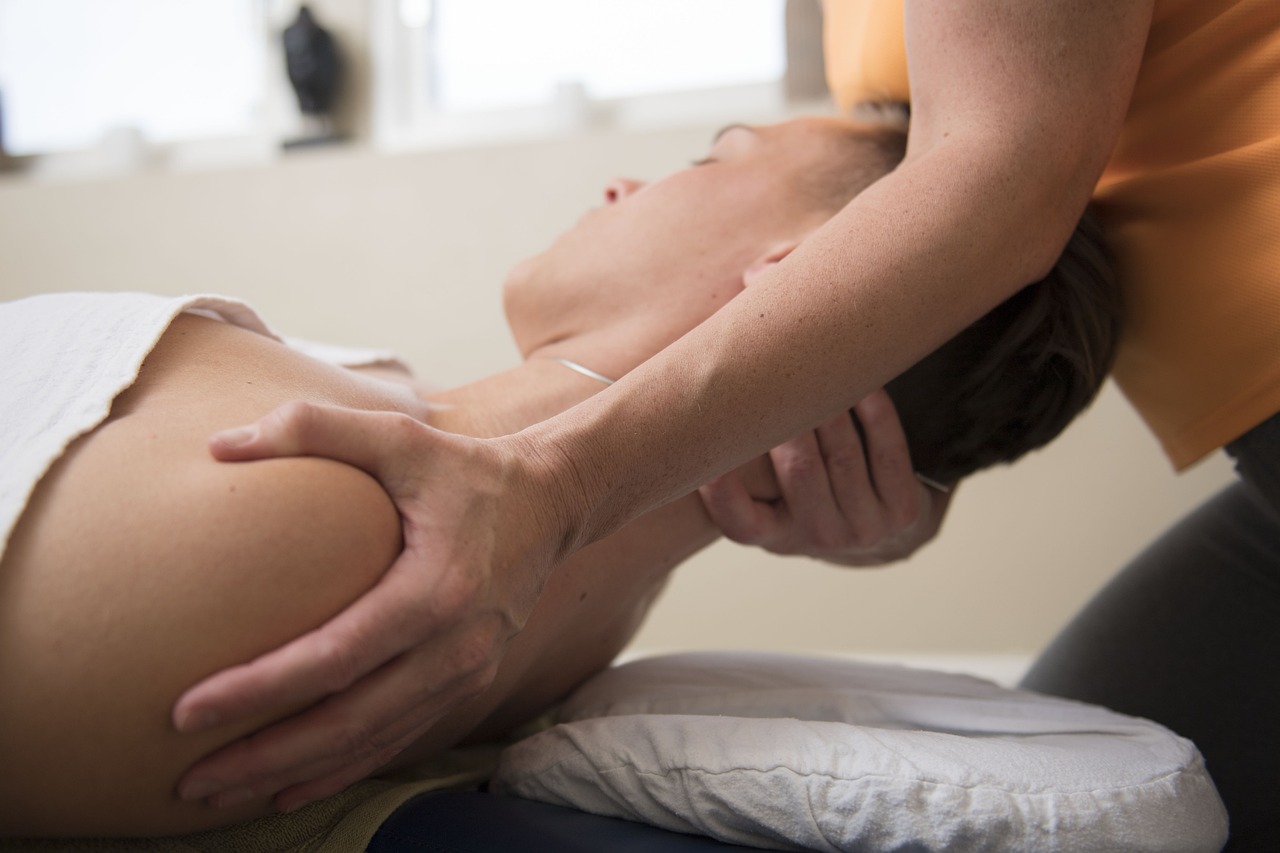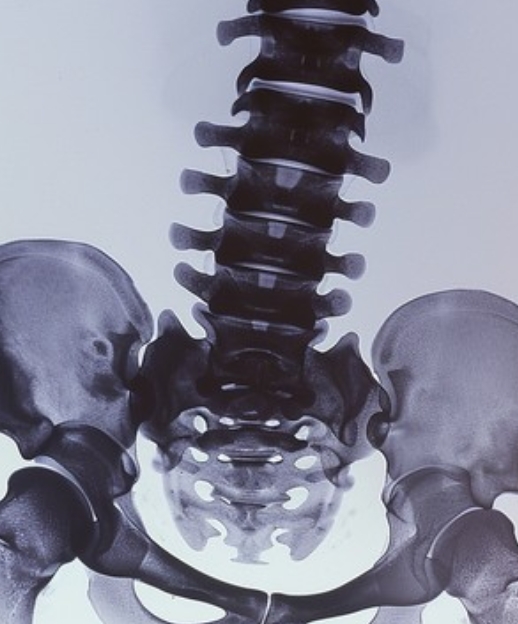A. Disc Morphology and Terminology Understanding Normal Discs, Bulging Discs, and Herniated Discs
Understanding the differences between bulging, protruded, and extruded discs is crucial. In 2014, Fardon et al. published recommendations to harmonize lumbar disc nomenclature, helping to standardize these definitions (Fardon DF, et al. 2014).
1. Normal Disc
-Defined as morphologically normal without considering the clinical context.
2. Bulging Disc
2a- Symmetric Bulging Disc: Annular tissue extends symmetrically, usually by less than 3 mm, beyond the vertebral apophyses.
2b- Asymmetric Bulging Disc: Annular tissue extends asymmetrically beyond the vertebral apophysis.
3. Herniated Disc
3a- Protrusion: Disc material extends beyond less than 25% of the disc space with a base wider than its protrusion.
3b- Extrusion: Disc material extends beyond its base at the disc space of origin.
3c- Sequestration: Extruded disc material that has lost connection with the disc of origin.
4. Intravertebral/central Herniation (Schmorl Node)
– Disc material displaces through the vertebral endplate into the vertebral body.
B. Localization of Herniated Discs
Central, Subarticular, Foraminal, and Extraforaminal Herniations
1. Central Disc Herniation
– The posterior longitudinal ligament (PLL) is thickest in the central region, causing most disc herniations to deviate slightly to the left or right. Central large disc herniation accounts for approximately 3.7% of cases, making it relatively uncommon. Despite its rarity, central disc herniation is the leading cause of cauda equina syndrome, which can result in severe disability (Kuansongtham V, et al. 2022; Kondo M, et al. 2018).
2. Subarticular Disc Herniation
– In the subarticular region, where the PLL is not as thick, disc herniation is most frequent. This region is, therefore, the most common site for disc herniations.
3. Foraminal Disc Herniation
– Disc herniation into the intervertebral foramen is rare, occurring in only 5% to 10% of cases. When it does occur, it can be particularly troublesome due to the proximity of the dorsal root ganglion (DRG), a sensitive neural structure, leading to severe pain, sciatica, and nerve cell damage (Chirchiglia D, et al. 2020; Lee JH, and Lee SH. 2016; Mérot OA, et al. 2016).
4. Extraforaminal Disc Herniation
– While extraforaminal disc herniation is relatively uncommon, it has been reported in 7-12% of lumbar disc cases (Polak SB, et al. 2020).
C. Classification of Migrated Disc Herniations
Types and Implications of Migrated Disc Fragments
Disc herniation refers to the localized displacement of disc material beyond the intervertebral disc space. When disc material separates from the disc of origin and migrates, it is referred to as a ‘free fragment’ or ‘sequestered fragment’ (Fardon DF, et al. 2014).
Migrated Disc Herniations
– Disc fragments can migrate rostrally, caudally, or laterally within the spinal canal (Daghighi MH, et al. 2013).
Classification:
– High-grade Up-migrated Herniation: Above the midpoint infra-pedicular area.
– Low-grade Up-migrated Herniation: Between the upper margin of the intervertebral disc and the midpoint infra-pedicular area.
– High-grade Down-migrated Herniation: Below the supra-pedicular level.
– Low-grade Down-migrated Herniation: Between the inferior margin of the intervertebral disc and the supra-pedicular level.
Downward migrations are approximately twice as common as upward migrations.
Conclusion
The variations in disc herniation morphology, localization, and migration patterns are critical for accurate diagnosis and treatment. Clear understanding and application of standardized nomenclature and classification systems help ensure that disc herniations are effectively managed. Continued research is necessary to further enhance these frameworks and improve patient outcomes.
Learning Points
- Accurate diagnosis of disc herniations requires understanding the distinctions between normal, bulging, and herniated discs.
- Central disc herniations, though rare, are the leading cause of cauda equina syndrome.
- The subarticular region is the most common site for disc herniations due to the thinner PLL.
- Foraminal herniations, although infrequent, can cause severe symptoms due to their proximity to the DRG.
- Disc fragments tend to migrate downward more frequently than upward, influencing clinical presentation and treatment approaches.
Acknowledge for detailed discreption
Illustration: Robin Smithuis, https://radiologyassistant.nl/neuroradiology/spine/lumbar-disc-nomenclature-2-0
Figures for herniated Lumbar disc locations: Case courtesy of Leonardo Lustosa, <a href=”https://radiopaedia.org/?lang=us”>Radiopaedia.org</a>. From the case <a href=”https://radiopaedia.org/cases/175917?lang=us“>rID: 175917</a>
References
- Chirchiglia D, Della Torre A, La Torre D. Comparison of post surgical results in medial and lateral lumbar spine herniated discs: Own case series experience. Interdisciplinary Neurosurgery, Volume 22, 2020, 100748, ISSN 2214-7519, https://doi.org/10.1016/j.inat.2020.100748.
- Daghighi MH, Pouriesa M, Maleki M, Fouladi DF, Pezeshki MZ, Mazaheri Khameneh R, Bazzazi AM. Migration patterns of herniated disc fragments: a study on 1,020 patients with extruded lumbar disc herniation. Spine J. 2014 Sep 1;14(9):1970-7. doi: 10.1016/j.spinee.2013.11.056. Epub 2013 Dec 18. PMID: 24361346.
- Fardon DF, Williams AL, Dohring EJ, Murtagh FR, Gabriel Rothman SL, Sze GK. Lumbar disc nomenclature: version 2.0: Recommendations of the combined task forces of the North American Spine Society, the American Society of Spine Radiology and the American Society of Neuroradiology. Spine J. 2014 Nov 1;14(11):2525-45. doi: 10.1016/j.spinee.2014.04.022. Epub 2014 Apr 24. PMID: 24768732.
- Kondo M, Oshima Y, Inoue H, Takano Y, Inanami H, Koga H. Significance and pitfalls of percutaneous endoscopic lumbar discectomy for large central lumbar disc herniation. J Spine Surg. 2018 Mar;4(1):79-85. doi: 10.21037/jss.2018.03.06. PMID: 29732426; PMCID: PMC5911762.
- Kuansongtham V, Lwin KMM, Wasinpongwanich K. Clinical results of combined interlaminar and transforaminal endoscopic discectomy for central large disc herniation. Interdisciplinary Neurosurgery, Volume 27, 2022, 101423, ISSN 2214-7519, https://doi.org/10.1016/j.inat.2021.101423.
- Lee JH, Lee SH. Clinical and Radiological Characteristics of Lumbosacral Lateral Disc Herniation in Comparison With Those of Medial Disc Herniation. Medicine (Baltimore). 2016 Feb;95(7):e2733. doi: 10.1097/MD.0000000000002733. PMID: 26886615; PMCID: PMC4998615.
- Mérot OA, Maugars YM, Berthelot JM. Similar outcome despite slight clinical differences between lumbar radiculopathy induced by lateral versus medial disc herniations in patients without previous foraminal stenosis: a prospective cohort study with 1-year follow-up. Spine J. 2014 Aug 1;14(8):1526-31. doi: 10.1016/j.spinee.2013.09.020. Epub 2013 Oct 11. PMID: 24291407.




